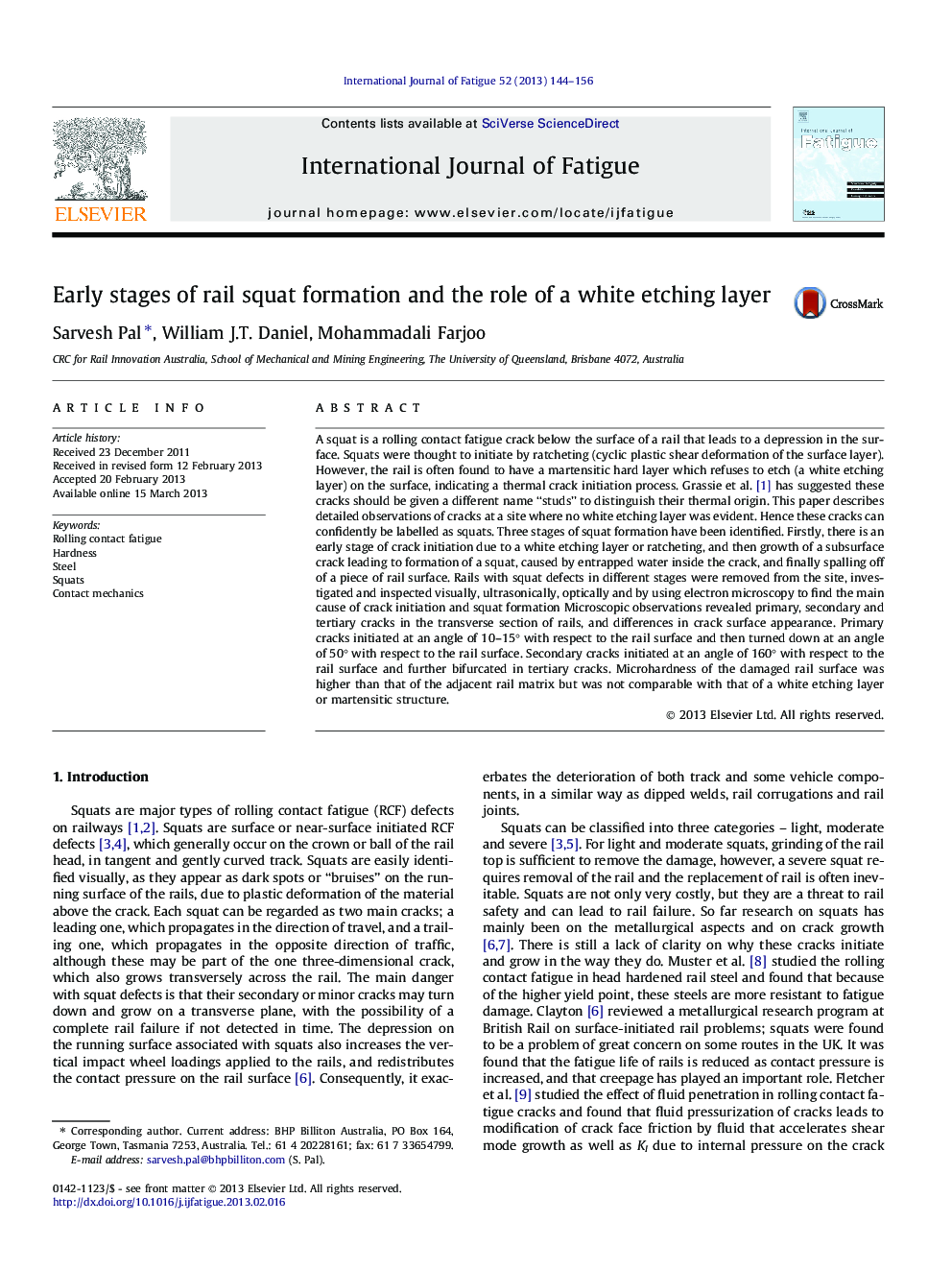| کد مقاله | کد نشریه | سال انتشار | مقاله انگلیسی | نسخه تمام متن |
|---|---|---|---|---|
| 777698 | 1463780 | 2013 | 13 صفحه PDF | دانلود رایگان |

A squat is a rolling contact fatigue crack below the surface of a rail that leads to a depression in the surface. Squats were thought to initiate by ratcheting (cyclic plastic shear deformation of the surface layer). However, the rail is often found to have a martensitic hard layer which refuses to etch (a white etching layer) on the surface, indicating a thermal crack initiation process. Grassie et al. [1] has suggested these cracks should be given a different name “studs” to distinguish their thermal origin. This paper describes detailed observations of cracks at a site where no white etching layer was evident. Hence these cracks can confidently be labelled as squats. Three stages of squat formation have been identified. Firstly, there is an early stage of crack initiation due to a white etching layer or ratcheting, and then growth of a subsurface crack leading to formation of a squat, caused by entrapped water inside the crack, and finally spalling off of a piece of rail surface. Rails with squat defects in different stages were removed from the site, investigated and inspected visually, ultrasonically, optically and by using electron microscopy to find the main cause of crack initiation and squat formation Microscopic observations revealed primary, secondary and tertiary cracks in the transverse section of rails, and differences in crack surface appearance. Primary cracks initiated at an angle of 10–15° with respect to the rail surface and then turned down at an angle of 50° with respect to the rail surface. Secondary cracks initiated at an angle of 160° with respect to the rail surface and further bifurcated in tertiary cracks. Microhardness of the damaged rail surface was higher than that of the adjacent rail matrix but was not comparable with that of a white etching layer or martensitic structure.
► Three stages of Rail Squat Initiation have been identified.
► Prediction of squat formation mechanism.
► Crack initiation due to ratcheting not WEL.
► Numerical model to predict crack initiation and propagation behaviour.
► Study of early stages of crack initiation and propagation in rail steel.
Journal: International Journal of Fatigue - Volume 52, July 2013, Pages 144–156